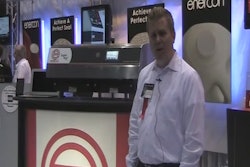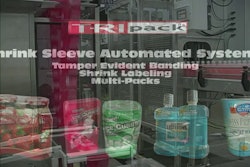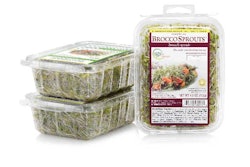1. The equipment has gotten smaller and more efficient. As a result, the power needed to achieve a good induction seal has lessened. The use of cut screens has also made them faster. Advances in the power supplies also mean that higher line speeds can be achieved.
2. Anti-counterfeiting and tamper evidence still drive improvements. Pharmaceutical manufacturers are most concerned with counterfeiting. So their seals are getting more sophisticated, with graphics and holograms to indicate tampering and/or counterfeiting.
3. Prices on user-friendly seals will come down. There are some newer induction seals that are easier to remove, due to an added tab; this is growing in popularity. Consumers appreciate the ease of use, but these seals are expensive, costing upwards of an additional half a cent apiece, when compared to the cost of a standard, non-tabbed inner seal. But the emergence of new suppliers could ease pricing pressure. Suppliers within the U.S. are growing steadily, and globally they are multiplying dramatically.
Here are three buying tips for specifying induction seal equipment:
1. Know the major container factors. The two major factors to consider when specifying an induction sealer are the size of the cap, and the speed of the production line. If it is a food application, a wash-down enclosure may be necessary. Other factors to consider are the type and composition of the container, the type of inner-seal material, and the type of product.
2. Consider your power supply. What size power supply is best for your application? There appears to be a misconception concerning the relationship between the kilowatt ratings of induction sealing systems and sealing capability. While it is true that a higher kilowatt rating generally means a more powerful system, this doesn’t necessarily result in higher sealing rates. Kilowatt rating is only part of the equation. The real secret to creating efficient and consistent seals consistently is the energy transfer from one part of the system to the other. Don’t focus solely on kilowatts as a measure of high sealing rates.
3. Talk to allied suppliers. Talk to suppliers of closures, bottles, or induction inner-seal materials; they’re constantly in the field and will know if a machine has a good reputation.
4. Know when a tamper-evident shrink band would be a better choice. “Tamper-evident” describes the process that makes unauthorized access to a protected package easily detected. Tamper-evident bands provide package benefits such as on-the-spot visual confirmation that the product is secure; printability with information, logos, bar codes, or other marketing-related materials; and the ability to cover inconsistent fill levels or unappealing product separation. The downside of tamper-evident banding is that it does not provide an oxygen barrier between the outside environment and the product, as an induction seal does. Shrink banding is simply a deterrent for tampering.
Induction sealing controls the internal atmosphere of the package. So, if a product is sensitive to oxygen, induction sealing would be the preferred method. Additionally, the induction liner is a hermetic seal that provides a moisture barrier that prevents product from drying out. Induction inner seals protect moisture-sensitive products, such as pharmaceuticals, from absorbing moisture, which can deter their effectiveness. Often, packagers will use both a tamper-evident shrink band and an induction inner seal.
Liked this article? Download the entire playbook here.

























